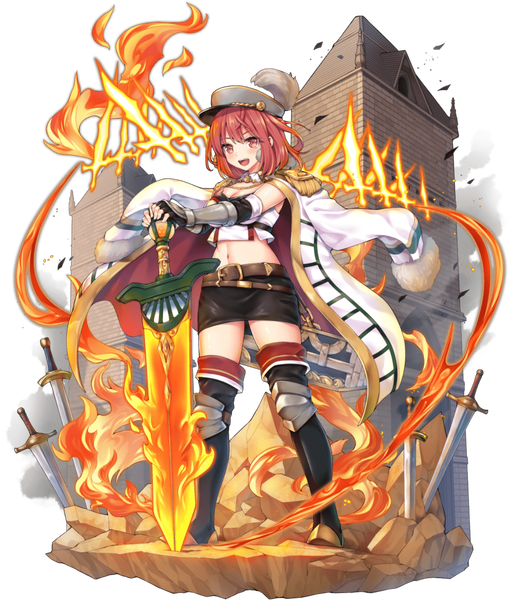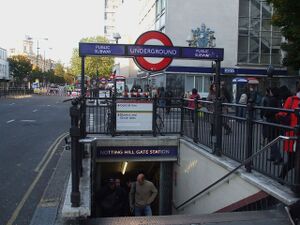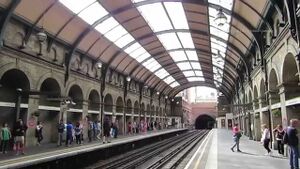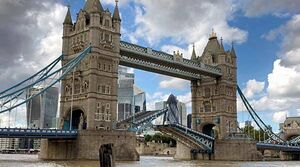Notting Hill
| Notting Hill | |||||
|---|---|---|---|---|---|
| Japanese Name | ノッティングヒル | ||||
| Weapon | |||||
| Race | Human | ||||
| Nationality | |||||
| Birthday | October 1 | ||||
| Constellation | Libra | ||||
| Talents | Swordsmanship learnt from the Knight Academy | ||||
| Likes | Competition | ||||
| Dislikes | People that don't put in any effort | ||||
| Strengths | Keeping her word | ||||
| Weaknesses | Trying things out without knowing if she can do it | ||||
| Hobbies | Going to the theatre | ||||
I'm Notting Hill from the Order of St. Iris. It's an honor to be a part of the SSS. I'm the rival to Queensway who got into the SSS before me. She must be proud to know she has a rival like me. I'm gonna give it my all and not let her down. I swear it by my sword and my teachings as a knight.
Layers
| Icon | Title | Release Date | Where to Obtain |
|---|---|---|---|
| [Sore Loser] Notting Hill | 2021 August 30 (EN) | Premium Gacha | |
| [Sword of Justice] Notting Hill | 2021 August 30 (EN) | Premium Gacha | |
| [A Sweaty Knight] Notting Hill | 2022 February 28 | [Fortune Teller of the Sparkling Lake] Pick Up Gacha, Premium Gacha | |
| [Hidden Maiden's Heart in a Kimono] Notting Hill | 2023 January 1 | [Hare Racing Mt. Cannon] Limited Gacha | |
| [To Stand Shoulder-to-Shoulder] Notting Hill | 2022 May 1 (EN) | [An Angel in the Isolation Ward] Limited Gacha | |
| [Clad Pride in Itself] Notting Hill | 2022 November 24 | [Downtown Oyabun and the Royal Opera Knight] Limited Gacha |
Obtained Skills
Trivia
- Notting Hill's birthday is the opening date of Notting Hill Gate Station in 1868.
- Notting Hill's closest friends are Lancaster and Queensway, the latter is also a rival that she wants to compete and win against. The trio's real life counterparts are close to each other and is on the same train line.
- Notting Hill's liking for theatres is a reference to the three theatres near the counterpart Notting Hill Gate Station in real life - The Coronet Theatre, Gate Theatre and The Gate Picturehouse.
- The building in the background of [To Stand Shoulder-to-Shoulder], as well as her sword's markings references the London Tower Bridge.
Counterpart
Notting Hill Gate is a London Underground station near Notting Hill, London, located on the street called Notting Hill Gate. On the Central line, it is between Holland Park to the west and Queensway to the east. On the District line and Circle line, it is between High Street Kensington and Bayswater stations. It is on the boundary of Travelcard Zone 1 and Zone 2.
The sub-surface Circle and District line platforms were opened on 1 October 1868 by the Metropolitan Railway (MR) as part of its extension from Paddington to Gloucester Road. The Central line platforms were opened on 30 July 1900 by the Central London Railway (CLR). Entrances to the two sets of platforms were originally via separate station buildings on opposite sides of the road; access to the CLR platforms was originally via lifts. The station name Notting Hill Gate had potential for confusion with the MR station to the north in Ladbroke Grove which was known as "Notting Hill" when opened in 1864, and renamed "Notting Hill & Ladbroke Grove" in 1880. This latter station eventually, in 1919, dropped its reference to Notting Hill, becoming "Ladbroke Grove (North Kensington)" in 1919 and, simply, "Ladbroke Grove" in 1938 (see Ladbroke Grove Underground station). On the Circle and District lines Notting Hill Gate is a cut and cover station still covered with a glass roof, despite many other similar stations having lost theirs.
The station was rebuilt in the late 1950s and reopened on 1 March 1959, now linking the two 'Notting Hill Gate stations' on the Circle and District and Central lines, which had previously been accessed on either side of the street, with a shared sub-surface ticket hall and escalators down to the deeper Central line, replacing the aged and now sealed-off lifts. The escalators were the first on the Underground to have metal side panels rather than wooden. The new entrance also acts as a pedestrian subway under the widened Notting Hill Gate. The mosaic columns at the southern entrance were created in 2006 by local public art organisation Urban Eye.
The station was refurbished from 2010 to 2011, with new ceramic tiling throughout the subway entrances, deep-level passageways and Central line tube platforms as well as a modified ticket hall layout. During the refurbishment works an abandoned lift passageway from the original 1900 CLR station, closed to the public after Notting Hill Gate was last upgraded in 1959, was rediscovered and found to contain a series of original posters dating from the late 1950s. Images have been posted online. A scheme was developed by the architects Weston Williamson to provide canopies over the entrances from the street, but this has not been implemented. Wikipedia
Tower Bridge is a Grade I listed combined bascule and suspension bridge in London, built between 1886 and 1894, designed by Horace Jones and engineered by John Wolfe Barry with the help of Henry Marc Brunel. It crosses the River Thames close to the Tower of London and is one of five London bridges owned and maintained by the Bridge House Estates, a charitable trust founded in 1282. The bridge was constructed to give better access to the East End of London, which had expanded its commercial potential in the 19th century. The bridge was opened by Edward, Prince of Wales and Alexandra, Princess of Wales in 1894.
The bridge is 800 feet (240 m) in length and consists of two 213-foot (65 m) bridge towers connected at the upper level by two horizontal walkways, and a central pair of bascules that can open to allow shipping. Originally hydraulically powered, the operating mechanism was converted to an electro-hydraulic system in 1972. The bridge is part of the London Inner Ring Road and thus the boundary of the London congestion charge zone, and remains an important traffic route with 40,000 crossings every day. The bridge deck is freely accessible to both vehicles and pedestrians, whereas the bridge's twin towers, high-level walkways and Victorian engine rooms form part of the Tower Bridge Exhibition.
Tower Bridge was officially opened on 30 June 1894 by the Prince and Princess of Wales. The opening ceremony was attended by the Lord Chamberlain, the Lord Carrington and the Home Secretary, H. H. Asquith. An Act of Parliament stipulated that a tug boat should be on station to assist vessels in danger when crossing the bridge, a requirement that remained in place until the 1960s. The bridge connected Iron Gate, on the north bank of the river, with Horselydown Lane, on the south – now known as Tower Bridge Approach and Tower Bridge Road, respectively. Until the bridge was opened, the Tower Subway – 0.25 mi (400 m) to the west – was the shortest way to cross the river from Tower Hill to Tooley Street in Southwark. Opened in 1870, Tower Subway was among the world's earliest underground ("tube") railways, but it closed after just three months and was reopened as a tolled pedestrian foot tunnel. Once Tower Bridge was open, the majority of foot traffic transferred to using the bridge, as there was no toll to cross. Having lost most of its income, the tunnel was closed in 1898. The high-level open-air walkways between the towers gained a reputation for prostitutes and pickpockets. Since they were only accessible by stairs, the walkways were seldom used by regular pedestrians and were closed in 1910. The walkway reopened in 1982 as part of the Tower Bridge Exhibition. Wikipedia
Map
Gallery
- Pages using Tabber parser tag
- Pages using DynamicPageList3 parser tag
- Weapon Sword
- Human
- St. Iris
- Libra
- Element Cut
- Element Fire
- Element Light
- Element Wind
- Train Knights
- England





















